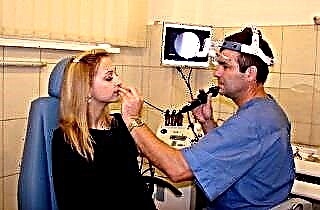Myocardial infarction - damage to the heart muscle due to coronary artery thrombosis with the development of necrosis. It occurs against the background of ischemic heart disease, is more common in men. The disease requires immediate inpatient treatment (medication and / or surgery). Then a long recovery period in sanatoriums and at home, constant medication, lifestyle changes.
Drugs for the treatment of myocardial infarction
Before arriving at the hospital, it is not always possible to determine whether a patient has a heart attack, therefore, a "working diagnosis" is often made: acute coronary syndrome with or without ST segment elevation... The patient needs to be given a supine position with a slightly raised head, provide fresh air, help calm down.
The list of drugs used to relieve an acute condition in myocardial infarction:
- "Nitroglycerin" (antianginal, vasodilating effect) under the tongue in tablets of 0.5-1.0 mg or 1-2 doses in an aerosol. If necessary, the action is repeated (if the pressure (BP) is not very low) after the expiration of the duration of the previous tablet (every 5-10 minutes). In case of severe pain syndrome, 2.0 ml of 1% solution of "Nitroglycerin" is injected, diluting it in 500 ml of 0.9% NaCl or 5% glucose. The solution is injected intravenously under the control of blood pressure and pulse. Stop infusion at systolic pressure <90 mm Hg. Art.
- Acetylsalicylic acid ("Aspirin", ASA) - chew a dose of 160-325 mg. You can apply "Clopidogrel" 300 mg to patients under 75 years of age. Patients after this age - 75 mg.
- Oxygen is supplied in a volume of 2-4 liters per minute.
- β-blockers are prescribed to everyone in the absence of contraindications (bradycardia, arterial hypotension, congestive heart failure). Non-selective substances are used: "Propranolol" - 20-40 mg; "Metoprolol" - 25-50 mg orally or intravenously slowly in a stream; "Esmolol" - 250-500 mg bolus (syringe into a vein) followed by infusion at the rate of 50-100 mcg per kilogram of body weight per minute.
- Calcium channel blockers (Verapamil, Diltiazem) are given if there are contraindications to β-blockers.
- In acute rhythm disturbances, antiarrhythmic drugs are used: "Cordaron" - 5 mg per kg of body weight intravenously, diluting 5% glucose by 250 ml. Enter over 20-120 minutes.
- Narcotic analgesics (pain relief is required to avoid painful shock): "Morphine hydrochloride" is used in the amount of 1.0 ml of 1% diluted substance in 20 ml of 0.9% NaCl (inject 4-10 ml, fractionally); "Promedol" - according to the same scheme; with respiratory depression give "Naloxone" (0.1-0.2 mg every 15 minutes).
- Anticoagulants: unfractionated heparin at a dose of 60 IU per kilogram of patient weight should be diluted in 20 ml of 0.9% NaCl and administered intravenously; "Enoxaparin" - subcutaneously 0.1 ml per 10 kg of body weight; Fondaparinux - 2.5 mg subcutaneously.
- With emotional and psychomotor agitation, you can use the tranquilizer "Diazepam".
Medicines used in a hospital setting
In the hospital, patients undergo reperfusion (restoration of normal oxygen supply to the heart), using thrombolytic agents. Also, in the first 12 hours after the onset of symptoms of a heart attack, the patient can undergo percutaneous coronary intervention (stenting), which is considered the best treatment in this case.
For thrombolysis, use:
- "Streptokinase" - 1.5 million IU IV for 30-60 minutes. (contraindicated if not previously used).
- "Alteplase" - 15 mg IV bolus (0.75 mg per kg of body weight is administered in 30 minutes, then 0.5 mg / kg in 60 minutes, the total dose is not more than 100 mg).
- "Tenekteplaza" - used in / in bolus: 30 mg with a patient weighing less than 60 kg; 35 mg for 60-69 kg; 40 mg - 70-79 kg; 45 mg - 80-89 kg; 50 mg if the mass is> 90 kg.
A patient who is prescribed thrombolysis needs antiplatelet agents: acetylsalicylic acid, Brilinta or Clopidogrel, as well as anticoagulants: Enoxaparin, unfractionated heparin. If necessary, doctors continue to use drugs used for myocardial infarction at the prehospital stage: nitrates, antiarrhythmics, beta-blockers.
What to drink after a heart attack?
Medicines after myocardial infarction, used as long-term or permanent therapy:
- Antiplatelet and / or anticoagulant therapy. Antiplatelet agents: Aspirin (ASA) should be taken daily at a dose of 75-100 mg / day; "Clopidogrel" - 75 mg / day for 12 months.
- If these drugs are contraindicated, anticoagulants are recommended: Warfarin (subject to constant monitoring of the analysis for INR), Rivaroxaban, Dabigatran. Without fail, they are prescribed for atrial fibrillation, a thrombus in the left ventricle, and the presence of artificial valves.
- Sometimes used combinations of anticoagulants and low doses of ASA, "Clopidogrel".
- β-blockers and ACE inhibitors ("Perindopril", "Ramipril") are prescribed regardless of the level of blood pressure and the state of the left ventricle.
- Mandatory lipid-lowering therapy (reducing cholesterol fractions): "Atorvastatin", "Rosuvastatin". Statin treatment is started as soon as the diagnosis is made, starting with the maximum allowable doses and gradually decreasing them over time.
- Diuretics are used for heart failure: "Torasemide" in a daily dose of 10 mg.
How long to take pills
Medical treatment of myocardial infarction must be continued during rehabilitation after it. This prevents ischemia from progressing, thereby increasing survival and decreasing mortality. Taking medications prevents complications and recurrence of seizures, and drugs such as beta-blockers and ACE inhibitors even fight the consequences of the disease.
Conclusions
Pharmacology is constantly moving forward. Therapies and drugs for heart attack are being improved, and patient survival is increasing. The government regularly introduces bills that provide benefits for the treatment of acute ischemia, since the risk of a second episode depends on the fact of the constant use of pills. But it should be remembered that the best way to deal with pathology is its prevention, which includes giving up bad habits, proper nutrition, sports, good sleep and rest, and regular medical examinations.



